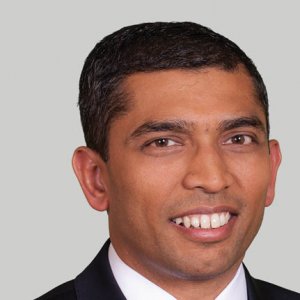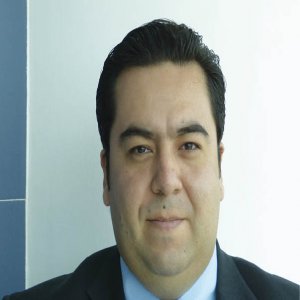Seizing Opportunity to Reset Exploration Priorities

STORY INLINE POST
Q: Considering the current state of the industry, what are PEMEX’s exploration priorities?
A: We have centered our priorities on four main categories or exploration areas. We have onshore fields, which tend to be mature or semi-mature fields, such as those in the southeast region. PEMEX E&P decided to retire from the Burgos basin in terms of natural gas exploration activities. Instead we are now focused on associated gas in the Veracruz basin because these reservoirs are more profitable than the ones in Burgos. As for oil, we are focusing on onshore and shallow water fields in the southeast region, where we are producing light oil, condensate, and extra-heavy oil. Another strategic priority is the search for oil reservoirs in the deepwater Perdido area. To a lesser extent, we want to consolidate the gas province near Coatzacoalcos, which includes discoveries such as Lakach, Nat, Hem, Kunah, and Piklis. We have at least five important fields with reserves of 2-3 tcf, which would enable us to reach new markets other than North America. There could even be more reserves, so we need to look for more alternatives. It is well known that PEMEX will have farm-outs for nonassociated gas in deepwaters and, ideally, those farm-outs will bring a partner that will make PEMEX more efficient. Then we have to look for markets with competitive prices, because budget cuts have forced us to move at a slower pace.
Another important subject is shale oil and gas reserves. Out of the nine blocks we were awarded, our focus is on exploring areas where we have identified high liquid contents in gas reservoirs and in Tampico-Misantla, where the potential of finding shale oil reserves is important. PEMEX E&P has already completed three wells with great results in this area. These tasks require continuous investments and high efficiency levels, so we have to look for partners that will enable us to identify potential in unconventional reserves and then move on to pilot programs that will allow us to understand the productivity of the wells before attempting mass production. As an exploration professional, I believe thet the opportunities in the Mexican basins continue to be very important. Today, the key terms are focus, cost efficiency, and selective application of technology.
If I could select a priority area, I would strengthen exploration in the onshore southeast basin, both onshore and offshore. This is the area where we have the highest probabilities of finding liquid hydrocarbons, and it is an area that can help us maintain production levels. To a lesser extent, we should also strengthen exploration in unconventional reservoirs. As an explorer, I think unconventional plays in Mexico, particularly in Tampico-Misantla, will be very successful projects even if they are not highly profitable.
Q: What have been the achievements of PEMEX’s strategy in searching for extensions of existing fields?
A: For a while, PEMEX saw its exploration budget reduced. This started changing some 12 years ago but the resources have not reached the levels needed to support our production targets. The growth rate still falls short compared to the exploration investments of companies like Shell, Exxon, or BP, especially considering what these companies extract each year and their reserve replacement rates. If these companies do not obtain their expected reserve replacement levels, they buy reserves from someone else while PEMEX was not able to do this. Although it might do so in the future, it still does not have the necessary budget. A company should not leave exploration until the medium- and long-term and neglect what has already been discovered. We have tried to play with budgets to continue with exploration and delineating reserves. The ideal scenario would be to have independent budgets for each activity and this is an area which PEMEX needs to work on. Today, a discovery with possible reserves is not worth as much as one with probable reserves. This would enable us to obtain the necessary resources to delineate reservoirs, and then have farm-outs with better terms
PEMEX is a world-class company that produces 3 million boe/d. However, we can no longer count on the supergiant fields we had in the past, such as Abkatun-Pol-Chuc, Samaria, Ku-Maloob-Zaap, and Cantarell. While we have discovered some reservoirs greater than 500 million boe, the possibility of finding new such super-giant reservoirs is low. Previously, the discovery of a field with resources of 15-30 million boe was not impressive, but companies now get excited over such discoveries. Now that the Energy Reform is in place, if PEMEX E&P makes such a discovery, it is possible to get a partner that could help us develop these resources. Based on the areas that PEMEX was awarded in Round Zero, we are figuring out when we should enter into partnerships and when we should move forward alone.

Q: What are the implications for PEMEX’s exploration activities of the decision to reduce its drilling fleet as a result of the drop in oil prices?
A: Between 70-80% of our exploration investments are directed to the drilling of wells, and between 10-20% are related to seismic data collection and processing. The remaining percentage goes to salaries, acquisition of technology, technical assistance, and such. Since 70% of our budget goes to drilling, we first need to adjust the tariffs of the equipment we lease. Second, we need to become more efficient in the design of each well and the execution of drilling activities. Investments in seismic services dropped considerably in the past two years. We are being creative in looking for new mechanisms because the Energy Reform allows speculative multi-client seismic surveys in which companies acquire 2D and 3D seismic with several clients paying for it. Before, 100% of the costs of seismic were paid directly by PEMEX but a company can now pay just 30% for the seismic data of an awarded area. This is another area where we are achieving efficiency. There are many areas where we can do more with less. We need to concentrate on reducing expenses related to services such as leased equipment, cementing, and muds, while we change the way we design wells and monitor their lifecycle.
Q: How is PEMEX E&P’s exploration division preparing for partnerships through consortiums and farm-outs?
A: A major advantage for PEMEX is that it knows the Mexican geology, but there is a difference between data and knowledge. Knowledge enables us to interpret data in different ways, particularly in exploration as we make many inferences based on our experience. Experience is essential in exploration. IOCs understand that the PEMEX staff knows the basins. However, PEMEX will only hold this advantage for two to four years, so we need to use this in our favor and forge the best alliances possible. We will be able to select our partner for new blocks, which unfortunately was not permitted for the blocks that were assigned to PEMEX in Round Zero. For these, we will propose around four companies, for which there will be a tender, and CNH will decide with who PEMEX will get to work with according to our technical or financial requirements.























